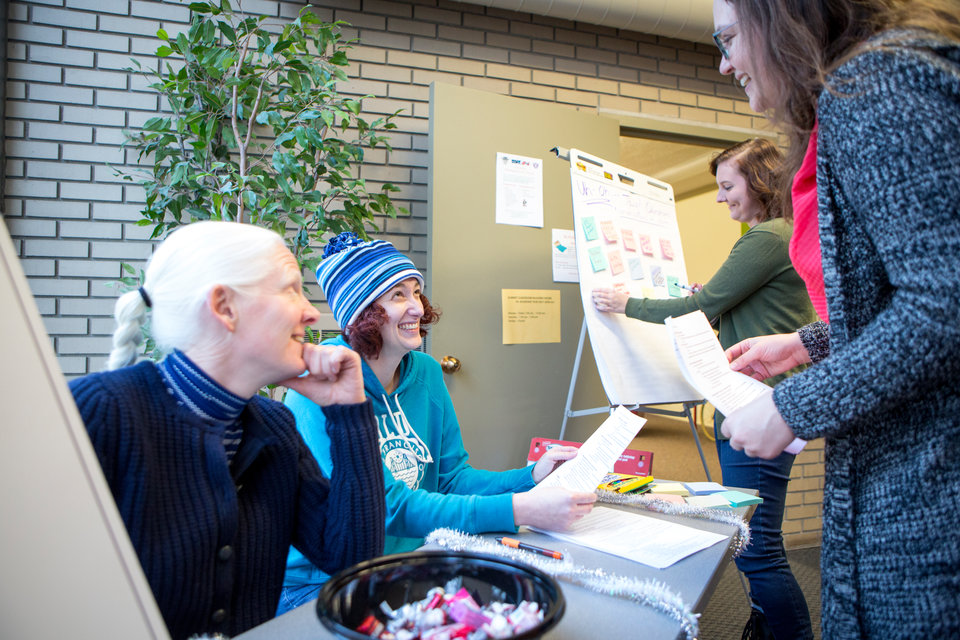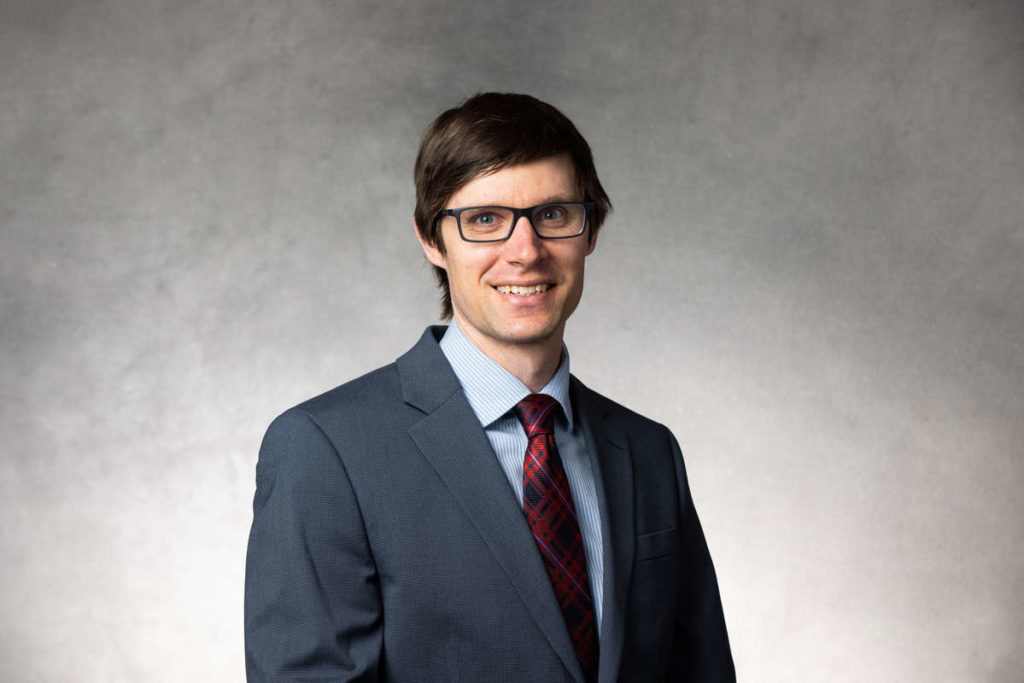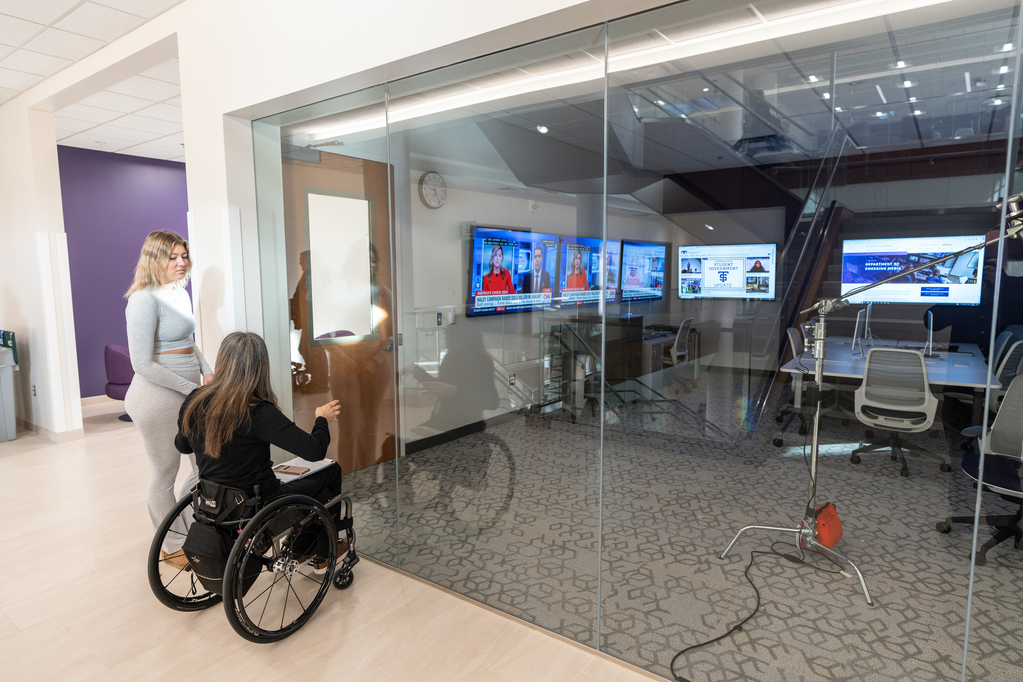Within the field of social work, macro-informed practice is often squeezed out. Work with a micro-focus is generally the kind of work that gets funded, and social workers in counseling positions are in demand. But a macro-informed practice is critical, because it encourages social workers to focus on the big picture – on practices that will provide structural solutions to existing problems, thus preventing future problems from happening.
Professor Jessica Toft, current president of National Association of Social Workers-Minnesota, said, “Social work is the only profession that has promoting social justice in its code of ethics. We’re trying to change conditions to prevent people from needing our services.” She believes that part of a social worker’s job is to be a voice in alliance with the communities he or she serves.
Bringing advocacy to direct practice
Because the St. Catherine University – University of St. Thomas School of Social Work is focused on clinical social work, assistant professor Lisa Kiesel saw the need to help students bring a macro-perspective into their practice. A couple of years before she developed the Mapping Social Justice program, she pondered ways to sustain graduate student engagement in advocacy. Under the Social Justice Initiative, students had voted to support the Justice 4 All Restore the Vote campaign. The students volunteered for door knocking and phone bank work. But the following year, only three students wanted to continue the work.
Kiesel knew that, as they balanced work, school and other commitments, it was difficult for students to add advocacy to their plates. “They enrolled in an evening program for a reason,” she said. She decided that it was important to bring advocacy to students and encourage them to engage on an individual basis rather than urge them to show up for collective actions.
When a grant became available, it allowed Kiesel to put resources into creating a way to integrate policy, advocacy and community engagement into practice. She asked herself, “How could I create a system to target relevant information to students?” In answer to the problem, she came up with a way of targeting macro-level actions according to a person’s interests – the Mapping Social Justice project.
What is Mapping Social Justice?
Mapping Social Justice began with a focus on students in the MSW program; since then, alumni have been rolled into the program. Designed to fit the need of busy people doing clinical social work, Mapping Social Justice may be rolled out to more groups as appropriate. Participants fill out a brief survey, which allows them to indicate populations they are working with and areas which interest them. It limits the number of areas they can choose in order to focus the Mapping Social Justice alerts each person receives. These on-target alerts increase the likelihood that the recipients will take action. The list of possible areas of interest is comprehensive, including children, adolescents, women, men, members of the LGBTQ+ community, military service members and veterans, immigrants and refugees, aging adults, criminal offenders, racial minorities, families, people with severe and persistent mental illness, people with disabilities, people who are socioeconomically disadvantaged, people struggling with substance abuse and addiction and victims of domestic violence, among other populations and issues.
Once people have submitted their areas of practice and interest, they begin receiving email alerts tailored to the issues that most concern them. The work of finding information for and crafting alerts belongs to research assistants from the MSW program. Currently, there are three research assistants: Lauren Abdill, Kate Lesch and Emily Neighbors. Neighbors has been with the program from the beginning. Lesch is the newest assistant. They divide the work between them by topic, scanning the news for relevant information.
“I try to look for what the mainstream press isn’t covering,” said Lesch. The information in the alerts needs to be local, actionable, easy, informative and timely. The research assistants gather a lot of information from local and national organizations. They may look at what other universities are saying and doing. They also follow nonprofits on social media. They sign-up for email lists and check state representatives’ webpages, watching for what’s trending and what will come up in the legislative session.
Once they’ve gathered information, the researchers craft short alerts both for email and for social media. The alerts might give suggested action items. An alert about supporting DACA suggested four possible actions for readers: contacting their legislators about supporting the DREAM Act, participating in a protest, reading first-hand stories about young people who have benefitted from DACA and – for readers who are themselves DACA recipients -- educating themselves on their rights. Another alert, targeted at people who are interested in voting rights, announced an informational event on combatting voter suppression tactics. People who follow the Mapping Social Justice Facebook page have encountered alerts about the NASW-MN Town Hall and about the Dignity for Incarcerated Women Act and how to support it, among other things.
A good thing is worth sharing
The success of the Mapping Social Justice project has been measured through surveys and through actions taken by participants. The latter isn’t always easy to measure if it isn’t reported, but Lesch pointed to the good turnout at a recent postcard campaign as an example of the project’s success. The event was designed to make things easy, so that participation would take students about five minutes. The student researchers provided participants with both writing prompts and addresses for their representatives. The event specifically targeted MSW students, but some non-MSW students also participated. “Anyone can ‘like’ our Mapping Social Justice Facebook page (facebook.com/SSWMappingSJ),” Lesch said. “We know some community members follow it.”
Kiesel has presented Mapping Social Justice to different conferences. In June 2017, she presented to the Influencing Social Policy national conference: Policy 2.0. The conference was largely focused on teaching social work, policy and related subjects. Kiesel pointed out that, because of their experience, audience members understood the struggle of trying to engage busy students at a macro-level.
In October, Kiesel presented again at the Council of Social Work Educators national conference, giving a poster session to field instructors and an oral presentation to an audience of people who teach policy. During this conference, she was approached by someone from the University of Nevada, Reno, who had been at the Influencing Social Policy conference. They told her they were implementing Mapping Social Justice at their own school – exactly the sort of thing Kiesel wanted to hear. Kiesel contributed to a book CSWE is putting together about the grant initiatives they funded, which will give educators another way to learn about Mapping Social Justice and implement it at their own schools.
In the end, the more Kiesel can encourage busy clinical social workers to engage in advocacy work, no matter how small the action, the better she has succeeded. “We can all play a part in social change and social justice” she said. “We all need to play some part, and it’s very possible.”








